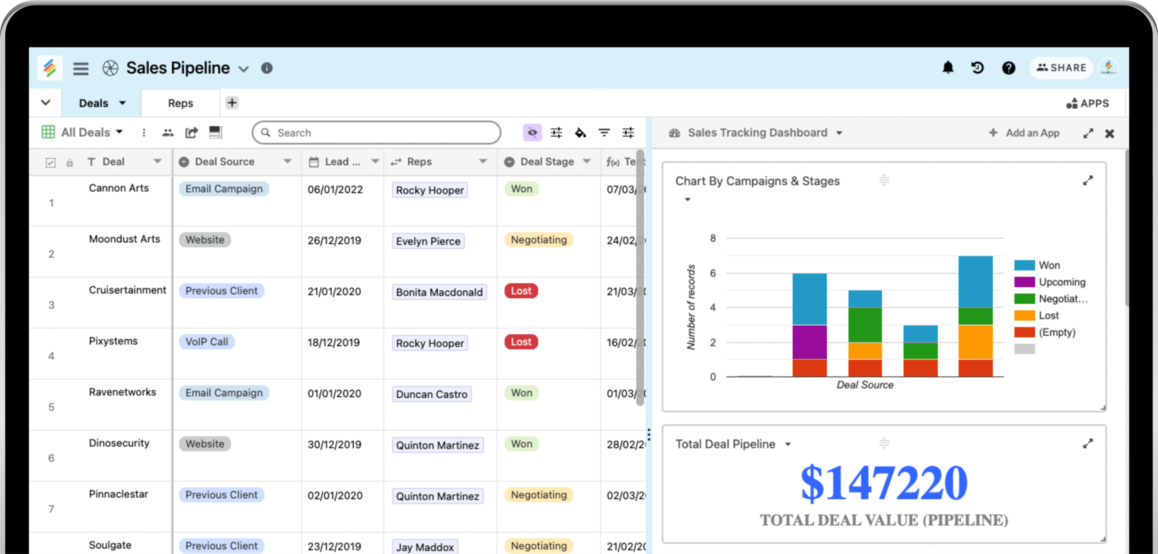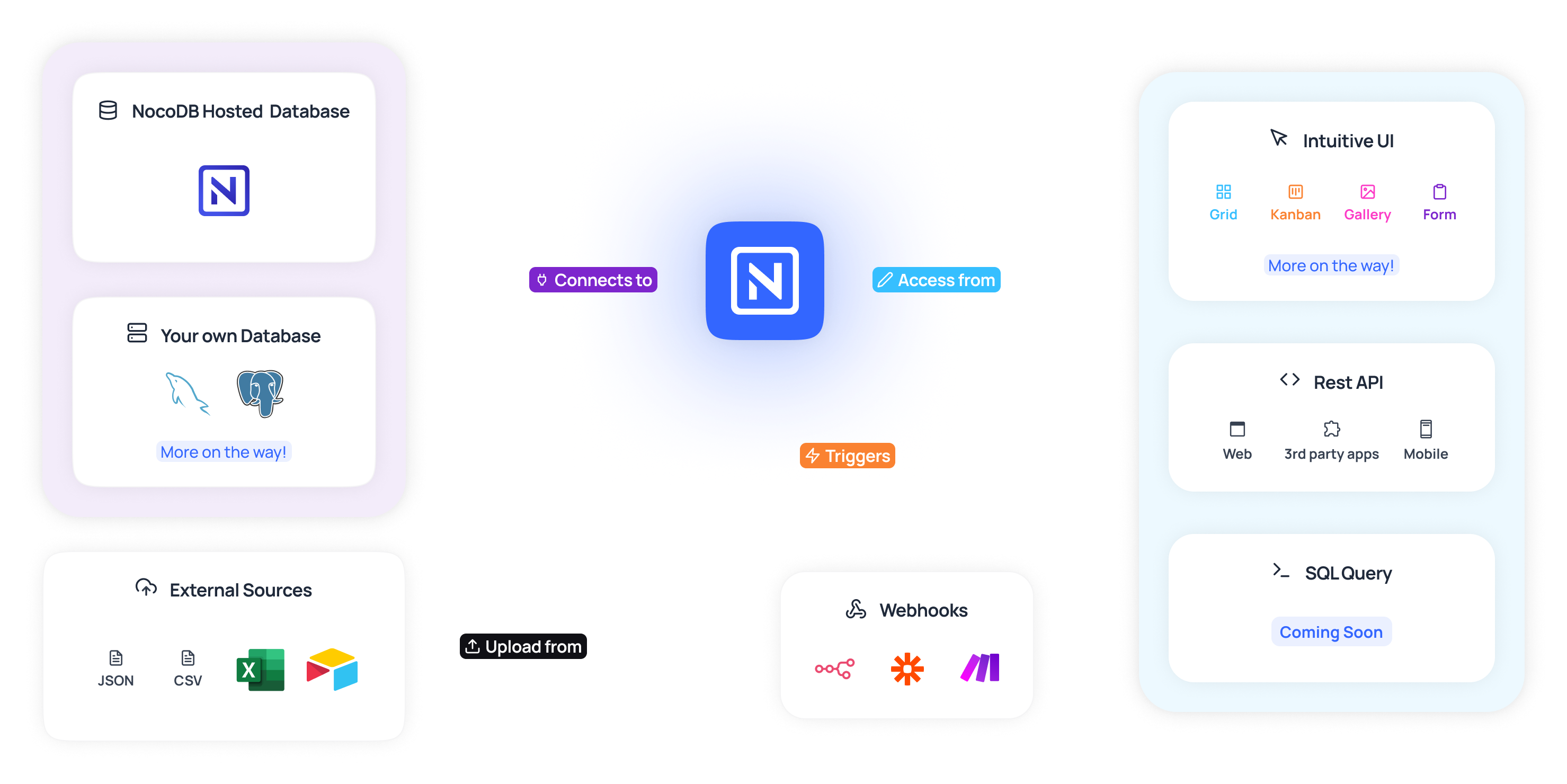Develop Open System Databases Quickly with the very best No-Code Equipment Available
Wiki Article
Checking Out the Advantages of Scalable Databases That Need No Coding Skills for Efficient Information Administration Solutions
The development of scalable databases that remove the requirement for coding abilities offers a transformative chance for companies looking for efficient information management services. By allowing non-technical users to harness the power of information through instinctive interfaces, these systems boost access and foster partnership throughout diverse teams. Moreover, their cost-effectiveness and flexibility to developing organization requirements can significantly simplify operational procedures. As we take into consideration the implications of such improvements, it becomes vital to examine exactly how they can reshape the landscape of information management and drive sustainable development in an affordable environment.Enhanced Ease Of Access for Customers
Enhanced accessibility for users is an important facet of scalable data sources, making certain that data management systems are straightforward and instinctive. In a period where data-driven choices are extremely important, access permits a bigger array of customers, consisting of those without substantial technological knowledge, to engage with database systems effectively. This democratization of information accessibility promotes boosted partnership across departments, encouraging workers to make and extract understandings notified decisions.User-friendly user interfaces, such as aesthetic information and drag-and-drop features depiction, streamline complicated data communications. These improvements decrease the learning contour connected with conventional database management, making it possible for users to concentrate on leveraging data rather than grappling with technical intricacies. Additionally, scalable databases commonly include real-time analytics and personalized dashboards, supplying individuals with prompt understandings customized to their specific demands.

Cost-Effectiveness and Source Savings
Reliable information administration not only pivots on availability but additionally on cost-effectiveness and source savings. Scalable data sources developed for users without coding skills substantially minimize financial worries usually related to typical database monitoring systems. By getting rid of the need for specialized programs knowledge, companies can designate their sources more successfully, focusing funds on core organization activities instead than comprehensive training or working with proficient personnel.Additionally, these data sources typically make use of cloud-based services, which better decrease expenses associated with hardware and upkeep. Organizations can scale their data source services according to their requirements, staying clear of the costs sustained from over-provisioning sources. This versatility suggests businesses can adapt to transforming needs without incurring unnecessary expenses, bring about significant long-lasting financial savings.
In addition, user-friendly interfaces enhance information access and management processes, decreasing the time invested in management jobs. This efficiency translates into labor expense financial savings, enabling groups to concentrate on critical initiatives instead of routine upkeep. Overall, embracing scalable databases that require no coding skills promotes a more cost-effective technique to information monitoring, making it possible for companies to optimize their sources while keeping high degrees of functional effectiveness.
Improved Partnership Across Teams

Moreover, scalable databases promote seamless communication among staff member. With user-friendly user interfaces that need no coding abilities, employees can easily produce, change, and share records or dashboards tailored to get more their certain demands. This democratization of information empowers non-technical users to contribute understandings, enhancing the collective atmosphere.
Furthermore, these data sources sustain simultaneous access, allowing several individuals to work with the very same dataset simultaneously. This feature boosts productivity, as teams can take part in joint data evaluation without the threat of variation control issues. The capability to leave remarks or notes straight within the database further promotes discussion and clarifies information interpretations.
Streamlined Information Monitoring Processes
In today's data-driven environment, companies recognize the requirement of structured information administration processes to maximize performance and precision. By leveraging scalable databases that require no coding skills, organizations can streamline their information handling and minimize the complexities usually connected with standard data source systems. This availability empowers non-technical users to engage directly with data, helping with quicker decision-making and reducing dependence on specialized IT workers.Streamlined data monitoring processes enhance operations by automating routine tasks such as information entrance, validation, and coverage. Automated data integration makes certain that info from various resources is aggregated seamlessly, removing silos and promoting an unified sight of important company metrics (no-code). User-friendly user interfaces allow employees to manipulate information conveniently, enabling them to create insights that drive critical campaigns without the need for comprehensive training.
This effectiveness not only increases operational processes yet also lessens the potential for human error, ensuring that information continues to be trusted and accurate. Eventually, structured information management processes with scalable data sources lead to improved efficiency, permitting companies to concentrate on core activities while guaranteeing that their information management methods are effective and effective.
Scalability for Expanding Organizations

For expanding ventures, the capability to scale up or down is important. A scalable data source can handle an influx of information created from brand-new clients, products, or services, ensuring that business procedures stay continuous. These databases give the capacity to handle peak loads successfully, which is necessary during durations of rapid development or seasonal spikes.
Furthermore, many scalable data source services are designed with straightforward user interfaces that require no coding abilities, empowering non-technical team to handle information successfully (no-code). This democratization of data monitoring permits companies to assign sources tactically and reduce reliance on specialized IT personnel
Eventually, adopting a scalable database not just improves functional efficiency yet also promotes an environment where companies can advance and innovate without the restrictions of traditional database systems. This flexibility positions organizations for lasting success in today's competitive landscape.
Final Thought
In conclusion, scalable databases that need no coding abilities give substantial benefits for reliable information monitoring. By simplifying information monitoring procedures and supplying scalability for expanding organizations, such services allow organizations to adapt to changing needs properly.Boosted access for customers is a crucial aspect of scalable data sources, making certain that information administration systems are user-friendly and intuitive.Easy to use interfaces, such as visual data and drag-and-drop attributes depiction, simplify complex information interactions. view it Overall, taking on scalable data sources that require no coding abilities promotes a more affordable method to information administration, enabling companies to maximize their resources while preserving high levels of functional effectiveness.
By leveraging scalable data sources that need no coding skills, services can simplify their information handling and decrease the intricacies normally associated with typical database systems - no-code.Structured data monitoring processes boost workflow by automating regular tasks such as information entry, recognition, and reporting
Report this wiki page